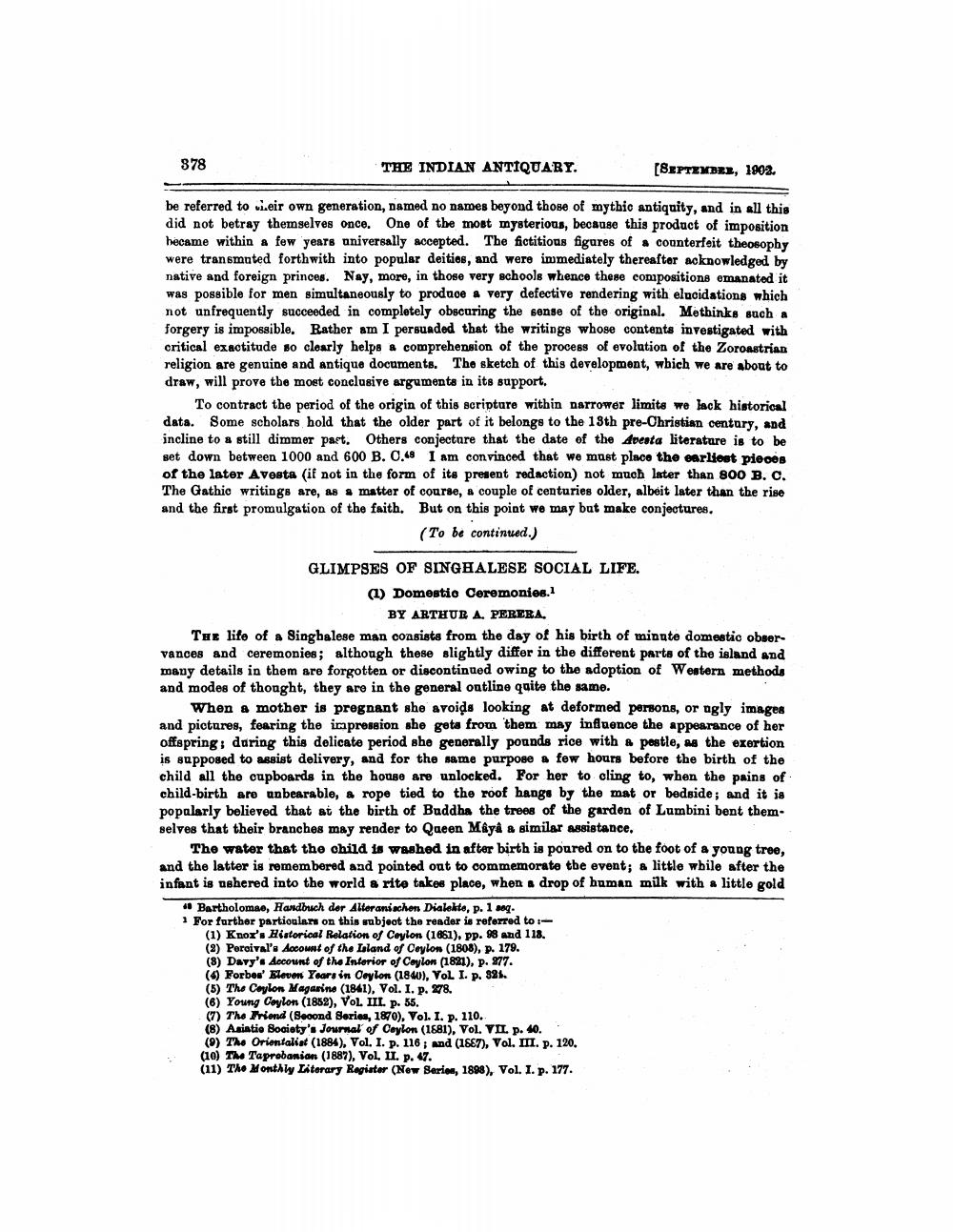________________
878
THE INDIAN ANTIQUARY.
[SEPTEMBER, 1902.
be referred to vieir own generation, Damed no names beyond those of mythic antiquity, and in all this did not betray themselves once. One of the most mysterious, because this product of imposition hecame within a few years universally accepted. The fictitious figures of a counterfeit theosophy were transmuted forthwith into popular deities, and were immediately thereafter acknowledged by native and foreign princes. Nay, more, in those very schools whence these compositions emanated it was possible for men simultaneously to produoe a very defective rendering with elucidations which not unfrequently succeeded in completely obscuring the sense of the original. Methinks such a forgery is impossible. Rather am I persuaded that the writings whose contents investigated with critical exactitude so clearly helps a comprehension of the process of evolation of the Zoroastrian religion are genuine and antique documents. The sketch of this development, wbich we are about to draw, will prove the most conclusive arguments in its support.
To contract the period of the origin of this scripture within narrower limits we lack historical data. Some scholars hold that the older part of it belongs to the 13th pre-Christian centary, and incline to a still dimmer part. Others conjecture that the date of the Avesta literature is to be set down between 1000 and 600 B. 0.49 I am convinced that we must place the earliest pieces of the later Avesta (if not in the form of its present redaction) not much later than 800 B. C. The Gathic writings are, as a matter of course, a couple of centuries older, albeit later than the rise and the first promulgation of the faith. But on this point we may but make conjectures,
(To be continued.)
GLIMPSES OF SINGHALESE SOCIAL LIFE.
(1) Domestic Ceremonies.1
BY ARTHUR A. PERERA. The life of a Singhalese man consists from the day of his birth of minute domestic observances and ceremonies; although these slightly differ in the different parts of the island and many details in them are forgotten or discontinued owing to the adoption of Western methods and modes of thought, they are in the general outline quite the same.
When a mother is pregnant she avoids looking at deformed persons, or ugly images and pictures, fearing the impression she geta from them may influence the appearance of her offspring; during this delicate period she generally pounds rice with a pestle, as the exertion is supposed to assist delivery, and for the same purpose a few hours before the birth of the child all the cupboards in the house are unlocked. For her to cling to, when the pains of child-birth are unbearable, & rope tied to the roof hangs by the mat or bedside; and it is popalarly believed that at the birth of Buddha the trees of the garden of Lumbini bent themselves that their branches may render to Queen Maya a similar assistance.
The water that the child is washed in after birth is poured on to the foot of a young tree, and the latter is remembered and pointed out to commemorate the event; & little while after the infant is ushered into the world a rite takes place, when a drop of human milk with a little gold
Bartholomae, Handbuch der Alteranischen Dialekte, p. 1 sg. 1 For further particulars on this subject the reader is referred to:
(1) Knor's Historical Relation of Ceylon (1861), pp. 98 and 118. (2) Percival's Account of the Laland of Ceylon (1808), p. 179. (8) Davy's Account of the Interior of Coylon (1821), p. 277. () Forbes' Eleven Years in Ceylon (1840), VOL I. p. 325. (5) Tho Coylon Magazine (1841), Vol. I. p. 278. (6) Young Coylon (1852), VOL III. p. 55. (7) The Iriond (Second Series, 1870), Vol. I. p. 110. (8) Asiatie Society's Journal of Ceylon (1881), Vol. VII. p. 40. (9) The Orientalist (1884), Vol. I. p. 116; and (1887), Vol. III. p. 120. (10) The Taprobanian (1887), Vol. II. p. 47. (11) The Monthly Literary Register (New Seriou, 1898), Vol. I. p. 177.




